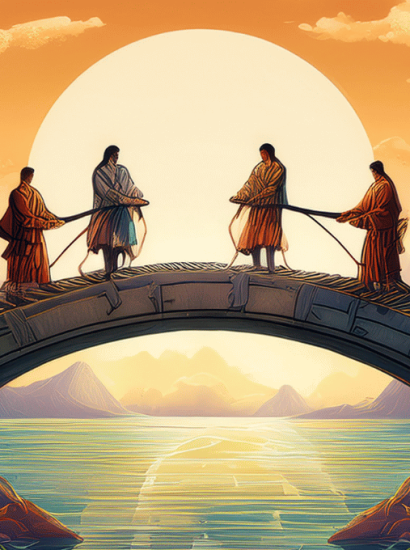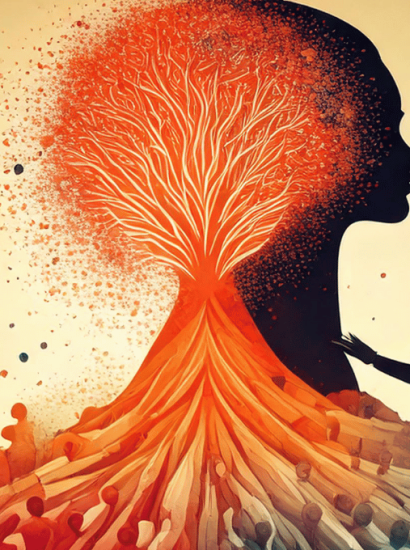This post is also available in: ΕΛΛΗΝΙΚΑ (GREEK) TÜRKÇE (TURKISH)
 Niyazi Kızılyürek, Member of European Parliament (AKEL)
Niyazi Kızılyürek, Member of European Parliament (AKEL)
Modern Turkey witnessed radical reforms even at its foundation. Mustafa Kemal and his colleagues set out to build a nation-state, or rather a state-nation, on the territory left over from the Ottoman Empire and sought a radical break from the Ottoman-Islamic past.
When the final external borders of the country were determined by the Treaty of Lausanne signed after the War of Independence (1919-1922), it was time for nation-building.
Mustafa Kemal’s mind was clear on this issue. The discussions held during the Young Turks period, and the theses put forward primarily by Yusuf Akçura and Ziya Gökalp, already constituted an important corpus. The Turkish nation was to be founded on national consciousness instead of religious ties, and it was to turn its face towards the West and be raised to the level of Western Civilization.
This civilization project meant introducing a series of radical changes in a society dominated by Islam and its traditions. According to the positivist understanding that had continued since the Young Turks, religion was the most important factor in the backwardness of society and it was necessary to break the social power of religion for progress and modernization.
Within the framework of this modernization paradigm, the Caliphate was abolished, religion classes at schools were eliminated, the call to prayer was made Turkish, religious marriages were banned, the hat was imposed instead of the fez, the Latin alphabet was adopted and by establishing the Directorate of Religious Affairs, religion was placed under state control.
In plain words, the principle of secularism became one of the most important principles of Kemalism. However, this understanding of secularism was different from the understanding of secularism we saw in the West. Separation of religion and state affairs and the chances for believers to live their religion freely and according to their conscience were restricted while religion gained an official characteristic by being brought under state control.
Kemalist reforms aimed at reorganising society based on the principle of secularism on the one hand, and at constructing and strengthening the national consciousness on the basis of Turkish nationalism on the other. The society, which had been held together by religious ties, would then onwards be organized on the basis of the national consciousness of Turkishness.
While modernization/westernization moves were being made in Turkish society on the basis of the principles of secularism and secular nationalism on the one hand, important problems emerged on the other. Kemalist reforms led to the emergence of more than one Turkey in the process. While the existence of Kurds was denied and assimilation policies were implemented by the state, large masses who defined themselves primarily as Muslims were humiliated.
In Peyami Safa’s words, “two different continents, two different conceptions of life, two different metaphysics” emerged. Yakup Kadri made a similar assessment too. In his novel titled “Ankara”, he writes that on the one hand, there were “feasts with whiskey, balls, men about town jumping like puppets in a makeshift setting,” and on the other hand, “primitiveness formed by those who live like a spider between mud walls, pious men in clogs, and newborns with sherbet…” (Yakup Kadri quoted in Nurdan Gürbilek, Sessizin Payı, Metis Publishing, Istanbul, Fifth Edition, 2021, p.94.)
In fact, modern Turkey was following in the footsteps of Ziya Gökalp. Gökalp, who put forward the synthesis of Turkification, Islamization and Civilization, argued that Turkish society would be civilized on the basis of Turkish-Islamic identity, and indeed the empirical data pointed to this synthesis of identity. A consciousness of Turkishness that excluded Islam was not accepted by the society. As a matter of fact, the Turkish-Islamic synthesis started to become prominent after 1950, when the multi-party system was introduced. However, the Islamist movement was also growing in the form of a separate branch. In addition, the suppressed Kurdish identity was increasingly reflected in the public sphere.
Interventions in political life and coups by the Kemalist army neither prevented the growth of the Islamist movement nor blocked the Kurdish movement. On the contrary, after each coup, the pluralist structure of Turkey became stronger and the Kemalist monotypic identity construct receded even further.
After a certain point, Kemalism became unable to respond to the demand for democracy of pluralist Turkey and the Kemalist military and civilian bureaucracy entered into a crisis of legitimisation.
While Kemalism was in decline, the Kurdish movement and the Islamist movement were gaining strength. The progressive Islamists, who emerged following the last coup against Islamist circles (the February 27 Process) and established the Justice and Development Party (AKP), aspired to rise to power at the end of 2002 with the collapse of the center-right parties.
AKP came first out of the 18 parties which participated in the 2002 general elections, with 34.26% of the votes, and won 363 of the 550 seats in parliament. This victory against Kemalism was a political earthquake. The Turkish press characterized AKP’s success as an “Anatolian Revolution”. This was partly true. In a speech delivered on 29 February 2000, Recep Tayyip Erdoğan said: “My story is the story of this nation. Either this nation will win and come to power, or an arrogant and oppressive minority group that looks at Anatolia with disgust and is alien to the realities of Anatolia will remain in power. The authority to decide belongs to the nation. That’s enough, sovereignty belongs to the nation.”
The people of Turkey had brought AKP into government, but being in government in Turkey did not mean being in power. The Kemalist political tutelage regime continued and the biggest problem was democratization. AKP was a bit luckier than political parties of the past in this regard. Provided that it was used correctly, EU membership, which was at the forefront of Turkey’s agenda and enjoyed great support from the people, offered AKP the opportunity to move towards democratization without a direct fight with the Turkish army and the Kemalist bureaucracy. Indeed, AKP was to base its entire strategy on Turkey’s progress towards the EU.
Moving in the direction of the EU meant reaching the level of a “Contemporary Civilization” which was Atatürk’s main goal. Thus, the AKP seemed to have adopted Atatürk’s policy of Westernization as a reference and was trying to solve its legitimacy problem with this strategic discourse.
Other social forces, in addition to the Kurdish and Islamic sectors, such as TÜSİAD (Turkish Industry and Business Association) and the press, known for being Kemalists, militantly supported EU membership in the name of Kemalism. This brought about a rupture of the Kemalist space. The anti-EU isolationist nationalists who rejected sharing sovereignty and sought to maintain Turkey’s “secular and unitary” structure were pitted against those who interpreted Kemalism to be compatible with progress towards the EU.
The AKP government, which started accession negotiations with the EU, quickly embarked on reforms and made significant changes that changed the face of Turkey. It broke the institutional power of the military and achieved significant success by overcoming the obstacles put in its way by the Kemalist bloc one by one. Attempts to shut down the AKP, efforts to prevent Abdullah Gül from becoming president, and the “Republic Rallies” that mobilized the “White Turks” were all thwarted. Each time, AKP emerged stronger from the ballot box and continued on its way, making fundamental constitutional changes. In 2007, the AKP’s brave opposition to the memorandum issued by the military over the internet and the military having to take a step back was a breaking point. Following this attempt by the military, the AKP government launched a counter-attack and brought the officers who had been involved in coup attempts to justice, even those who had contemplated a coup. This was the clearest proof that the AKP had not only taken over the government but also the power.
Recep Tayyip Erdoğan was attracting large masses of people to his side like a magnet with these initiatives, while increasingly gaining the sympathy of the outside world. Articles in the foreign press were full of praise for him, calling him the greatest leader since Atatürk. In particular, the constitutional reforms between 2007 and 2010 made Erdoğan and his party the prime drivers of Turkey’s democratization process, or so it seemed.
As Recep Tayyip Erdoğan caught a rapid upward trend and was overthrowing the Kemalist political tutelage regime, he found support not only from his own electorate but also from a wide range of circles. With 49.8% of the votes in the 2011 elections, AKP’s success was at its peak. But as its power grew and was consolidated, authoritarian tendencies began to appear. The “democratic” fig leaf of the “Conservative-Democratic” understanding that the AKP had proclaimed at the time of its founding was gradually vanishing. While Kemalist modernization constructed the Ottoman/Islamic tradition as the “Other”, AKP constructed the One-Party period, when Kemalist radicalism reached its peak, as the “Other” and increasingly turned towards reviving the Ottoman/Islamic tradition. What the Justice and Development Party understood from “Justice” was only “Islam-based National Culture” and “National Will”, and from development, it was only Neo-Liberal modernization. While it targeted raising “Religious Generations”, it practiced a complete social engineering which was incompatible with conservatism. Saying “Yes” to Western technology and “No” to Western morals, he was following the path of Ziya Gökalp and bringing anti-Western discourses to the forefront. While he was talking about Menderes and Özal when he started out – this was in a way an emphasis on conservative democracy – he then included Necmettin Erbakan in his “synthesis”. He displayed an extremely anti-intellectual attitude towards the liberal and leftist intellectuals who supported Erdoğan up until yesterday, and referred to Cem Karaca’s song “Half a Portion of Intellectualism” to insult them. When we looked at what he said about abortion and his understanding of a “strong society based on the fertility of mothers”, we could perhaps see “conservative” characteristics, but it was impossible to associate them with democracy. Erdoğan’s emphasis on the understanding of a strong and authoritarian state was a major obstacle in front of real democratization.
As can be seen from the above, the AKP was on its way to becoming a party that was increasingly conservative but completely diverting from a “democratic” sensitivity. In fact, it was expected to turn towards democracy after bringing an end to the Kemalist tutelage regime. But the reality is that the AKP actually turned Kemalism upside down. It adhered to Kemalism’s authoritarian understanding of the state and its method of social engineering, arguing that cultural identity should be restructured through interventions from above. The idea of a “Strong State”, envisioned on the basis of the “Great Leader” and gradually becoming a nationalist obsession, narrowed the space for democracy. Clearly, in Post-Kemalist Turkey, the “Elitist-Secular-Authoritarian Regime” had come to an end, but a “Conservative-Democratic” regime had not been established in its place.
AKP was increasingly orientated towards a single type of citizen shaped within the moulds of morality and religion. It sought to create a single type of citizen compressed into certain moulds, putting the brakes on Turkey’s progress towards a pluralist, participatory democracy. However, the fundamental problem of Turkey, where large groups of people with different identities and lifestyles live, was the problem of pluralist democracy. Anything done to condemn this diversity to uniformity inevitably meant authoritarianization.
Contrary to expectations, in post-Kemalist Turkey, Recep Tayyip Erdoğan has moved towards establishing a society with “one truth” by bringing the “national will” forward. Instead of free individuals who could examine their own conscience, obedient citizens who were told what was right and wrong were considered acceptable. “Wishes of the people” that identified with the leader were prioritized, rather than the requirements of democracy. These wishes were presented to be the wishes of the “once oppressed and despised people” and Erdoğan was portrayed as a “compassionate leader who pitied the oppressed people”. But in fact this was a vengeful approach. Instead of seeing the fact that he had secured the support of half of society as a legitimate way to lead the country towards democratization, he was using it as an instrument to “marginalize” the other half.
It was in such an environment that the Gezi Park Protests broke out. Violence was exerted against protesters who wanted to protect Gezi Park over ecological concerns. On 10 June 2013, Taksim Square and on 15 June 2013, Gezi Park were cleared by exerting disproportionate force by state forces acting against the protesters on Erdoğan’s orders. Six people were killed and more than ten people lost their eyes throughout the incidents.
In my opinion, the Gezi Park Protests marked the beginning of the end for Erdoğan. After the Gezi Park Protests, Erdoğan started to display more and more authoritarian behaviour. He accused the outside world, which had once supported him, of wanting to overthrow him and called the domestic opposition coup plotters.
After the failed coup attempt on 15 July 2016, which Erdogan called “God’s blessing”, a one-man rule was officially established in Turkey. With the constitutional amendment, the party-member president model was adopted and the separation of powers was abolished. All powers are now concentrated in the hands of Erdoğan, who was elected President in 2018, and a completely oppressive and arbitrary form of government has been established.
Importance of 2023 Elections
The presidential and parliamentary elections to be held on the centennial of the founding of modern Turkey can be a milestone in Turkey’s quest for democracy. The elections are taking place in a conjuncture in which the two dominant Grand Narratives of modern Turkey are both wounded. It has become clear that classical Kemalism and Islamism are not and cannot be the solution to Turkey’s problems. It is no longer possible to pave the way for society with these prescriptions.
From a historical perspective, we can say that the conditions for Turkey’s transition to a permanent democracy are in place.
However, it remains to be seen in May whether the great democracy move will take place after the 2023 elections or will Turkey need better luck next time…
Source: Towards a Post-Kemalist and Post-Islamist Turkey?






